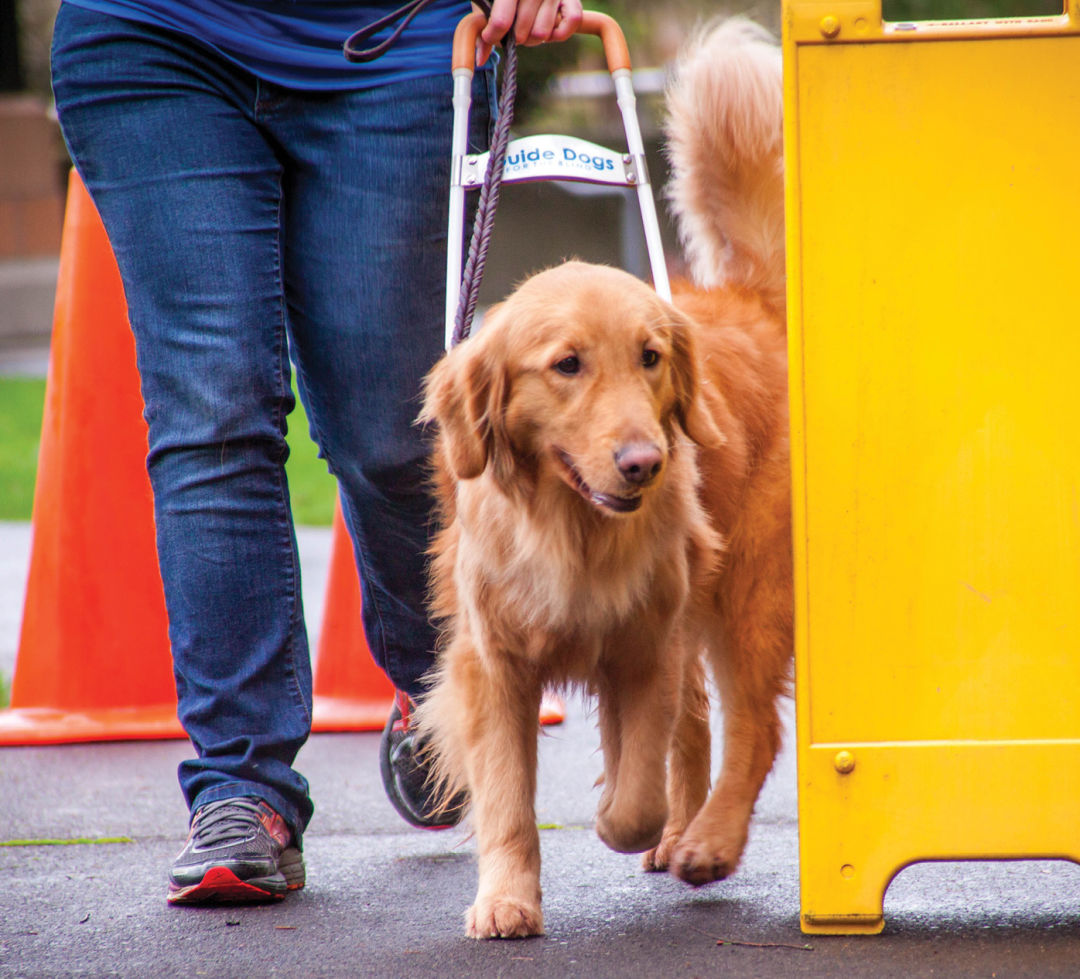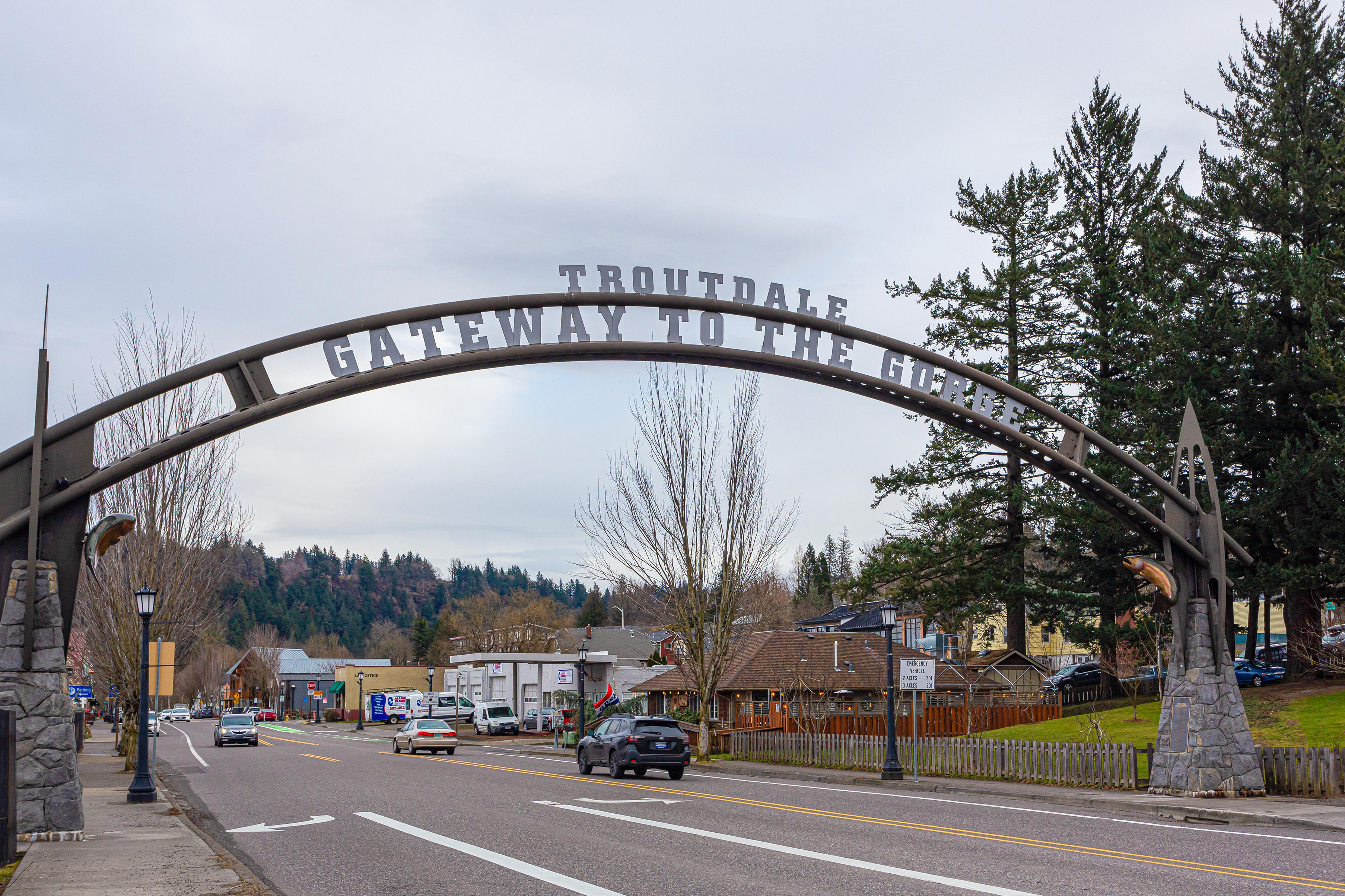Where Does the Harvard for Guide Dogs Train Its Canines? In Downtown Gresham.

A golden retriever at GDB’s Boring campus
Outside a squat brick building, five golden retrievers sit in a small parking lot, tongues lolling and tails wagging, while trainers gently secure brown leather harnesses around their chests. The year-and-a-half-old dogs are varying shades of gold—from pale yellow to sunshine—and all in different phases of training. Some sit calmly. Others leap up and trot in cheerful circles before sitting at the sound of their trainer’s clicker. Across the street, another four-legged student leads a blindfolded trainer rapidly down the sidewalk. When the dog finishes the exercise, it gets a nibble of dry food.
For people in downtown Gresham, this is an everyday ritual. Guide Dogs for the Blind, a nonprofit based in nearby Boring, Oregon, and San Rafael, California, has been putting its charges through their paces in the area for over two decades now. It’s one of 14 of its kind in America. Down the road, there’s even a life-size statue of a guide dog, sitting patiently and looking up at passersby.
Training guide dogs is similar to training any dogs. As in other programs, GDB trainers use clickers and positive reinforcement. The biggest difference comes from an unusual extra lesson: guide dogs need to learn to disobey. The most successful breeds? Golden retrievers and black labs.
“In every other type of training, you’re basically teaching a dog to do what you’re asking it to do,” explains Susan Armstrong, VP of training operations. “We’re saying, ‘We want to train you and ask you to do this most of the time, but we want you to use your discretion.’ That might mean there’s an uncovered manhole and the handler is commanding the dog to go forward and the dog refuses. Yes, they’re there to obey, but they’re also there to take that responsibility when they need to.”
Training can take three months, and only 50 percent of the dogs who enter the program even “pass.” Dropouts might return to the puppy raiser, be adopted by a loving family, or become a different type of service dog. With its own breeding program, veterinary services, and more than 2,000 puppy-raising families, GDB trains dogs for some 300 clients a year. All services—including the two weeks human clients spend living in campus dorms learning commands and training with the dogs—are provided free of charge to the eventual owners, funded by donations from individuals, corporations, and foundations.
Adds Armstrong: “It’s a deeper relationship than with a pet. It’s about trusting that dog with your life.”




